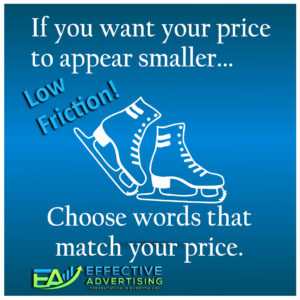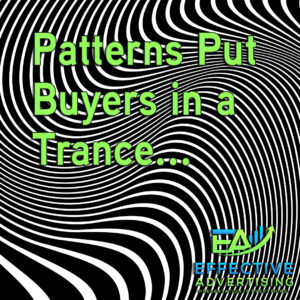In our last article, we shared 3 small changes – to subliminally strengthen your Sales Copy.
Because we got such a great response…
We thought we’d give you – 3 more proven price strategies to make your accountant smile.
Yet, before I share these other sneaky subliminal suggestions –
I’d like you to realize the reason these small simple changes work like magic – is because of how your brain works.
Have you ever listened to a jingle once –
But it played over and over in your mind for hours?
That’s because your brain notices everything –
Even if you think you have a terrible memory…
Your brain will easily recognize, categorize, and memorize patterns.
It’s designed like this to keep you safe.
So even if your brain is busy evaluating everything at a subconscious level, you still notice the patterns.
Here’s an easy way to prove it.
Look at these fonts:
Which one would you choose for a bodybuilding bootcamp?
*Most of us would choose 3*
Because it feels like a big, bad***, boot camp, doesn’t it?
Maybe because it reminds you of the TV show, MASH –
Or its thick, bulky lines make it seem strong.
Whatever the subconscious reason, it just matches.
This is called, “Association.”
Where our brains link the two things together –
Even if we don’t understand why…
Now let’s get to the gold.
Here are several subliminal links to create a positive feeling about your price:
#1 – If You Want Your Price to Appear Smaller – Choose Words that Match
 Your brain will compare the price to the words and other surrounding elements on the page.
Your brain will compare the price to the words and other surrounding elements on the page.
For example, in one study, the skates seemed cheaper with the words – “Low Friction” by the price.
The buyer associated the word with the price!
So they tested it further…
With the words, “High Performance,” this time buyers related the words to “high” price.[1]
So think about the words you place near your price – do they match the message of your brand?
For example, if your audience is looking for a good deal, you may like to place words that depict a small size (“tiny,” “small,” and “low”) near your price.
#2 – The More Poetic The Price… The More People Will Buy
One study found customers were more likely to buy two t-shirts for $25 because of the matching sound…[1]
Go ahead and say it –
“Two T-shirts for Twenty-five Dollars.”
Do you hear the alliteration?
It’s poetic…
And because it’s a pattern…
Your brain will recognize it –
If it’s familiar, it just feels right!
Rhythmic phrases, jingles, and poetic presentation give us a pleasant feeling.
And we begin to associate the positive feelings of poetry with the product.
#3 – If The Math Adds Up – Your Price Will Just Make Sense
 Would you order “Up to 6 toppings” or would you get “Unlimited toppings” on your pizza?
Would you order “Up to 6 toppings” or would you get “Unlimited toppings” on your pizza?
If the price for 4 small pizzas is $24 –
We find that most people will choose “up to 6 toppings, instead of getting unlimited toppings…”[2]
Because 4 x 6 = 24…
This price somehow feels more right to them –
Even when the customer isn’t consciously doing the math.
Conclusion: Patterns Invite Your Audience to Go Into a Buying Trance
The more we look at something the more we like it –
And the more we like it – the more we look at it…
If it’s familiar, the brain will automatically make associations with it.
You can easily create a positive feeling that connects your viewers to your product or service…
By giving their brain a pattern –
With poetry or math, or something else they already like, know and trust.
I’d love to hear how this makes a difference for you.
(Adapted from Pricing Psychology by Nick Kolenda)
𝗣.𝗦. When you put these persuasion principles into practice with your sales and marketing message –
I’d love to see how these subliminal strategies fatten your wallet.
[1] Davis, D. F., Bagchi, R., & Block, L. G. (2016). Alliteration alters: Phonetic overlap in
promotional messages influences evaluations and choice. Journal of Retailing, 92(1), 1-12.
[2] King, D., & Janiszewski, C. (2011). The sources and consequences of the fluent processing
of numbers. Journal of Marketing Research, 48(2), 327-341.
[1] Coulter, K. S., & Coulter, R. A. (2005). Size does matter: The effects of magnitude
representation congruency on price perceptions and purchase likelihood. Journal of
Consumer Psychology, 15(1), 64-76.



 Your brain will compare the price to the words and other surrounding elements on the page.
Your brain will compare the price to the words and other surrounding elements on the page.
 Would you order “Up to 6 toppings” or would you get “Unlimited toppings” on your pizza?
Would you order “Up to 6 toppings” or would you get “Unlimited toppings” on your pizza?
Recent Comments